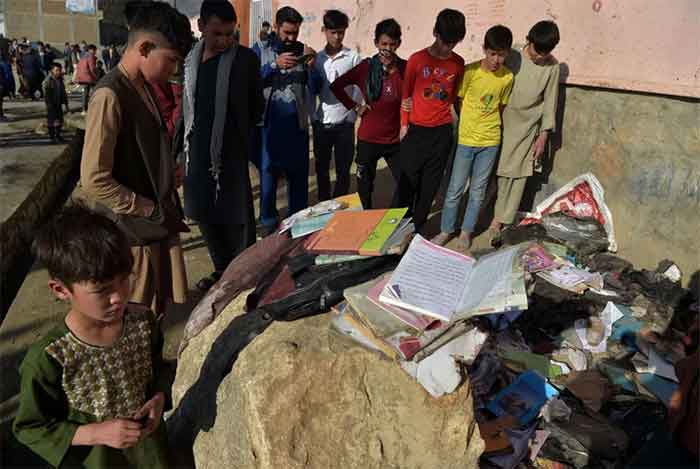
When children leave school for the day they are in a joyous mood. They are happy to be going home, and yet they have so much to tell their friends before they go. So friends cling to each other to say all their precious important things before they separate for the day. Free of the discipline of the classroom and the watchful eye of the teacher, this can also be the time for much teasing, apart from saying good-bye. So clearly there is much happy chatter, with children shouting to be audible.
It was in this happy mood at a girls school in Kabul, with teenage students crowding near the exit points, that terrorists exploded their bombs to match precisely with the school leaving time. Over 70 persons, most of them girl students, died a very painful death, while nearly double this number were injured.
This attack on schoolgirls on May 8 took place in Dasht-e-Barchi area of Kabul was preceded by several violent attacks on soft targets in the same area, including places relating to sports, cultural activities and education. Last year another attack attributed to the IS had claimed almost as many lives. This time the attack has not been claimed by anyone, but all indications are towards the involvements sectarian militant or terrorist groups.
In the middle of announcements of the final US decision to withdraw their armed forces from Afghanistan before September 11, at the end of about 20 years, violent attacks have increased. A comparison of the violence in the first 3 months of this year revealed a significant rise in civilian victims compared to the same period of the previous year.
Moreover the specific targeting of areas like Dasht-e-Barchi is of significance as this area is inhabited predominantly by Shia Hajaras. Both in terms of ethnicity and religion they are minorities in a country where an overwhelming majority of the population consists of Sunni Muslims. The Hajaras who number about 9 per cent of the population have faced a lot of violence at the hands of terrorists and fanatic/sectarian militant organizations in the past.
Another important aspect of the recent school bomb attack is that specifically girl students were targeted. There have been other cases of forward-looking, educated, professional women being specifically targeted by sectarian militant organizations. The killing of some women TV professionals in recent times has been widely condemned.
Earlier women in Afghanistan had enjoyed a fair degree of freedom but the years of Taliban rule ( 1996-2001) witnessed a big setback for rights of women . Education of girls and women and taking up of jobs by them declined drastically.
There are widespread apprehensions that the departure of US forces will further strengthen the hands of the Taliban and other sectarian militant organizations which already control a big part of the territory of Afghanistan. In particular girl students, professional women and ethnic/religious minorities are likely to face very difficult times and even violence. Those involved in activities not considered to be in keeping with the thinking and self-interest of these very narrow-minded militants are likely to suffer, and the school-bombing of May 8 is an indication of how ruthless and cruel such groups can get.
Future prospects will be even more dreadful if these groups capture the government at the national level, which is of course their final aim.
There is therefore a very clear need for protecting human rights of the most vulnerable groups in Afghanistan, identified on the basis of gender, religion, ethnicity etc. but the road ahead is frankly full of many uncertainties. This much is clear that preparation at world level for such protection should start without further delay.
Bharat Dogra is a journalist and author. His recent books include Planet in Peril and Earth without Borders.
GET COUNTERCURRENTS DAILY NEWSLETTER STRAIGHT TO YOUR INBOX
Related posts:
Related posts:
Views: 0
 RSS Feed
RSS Feed
















 May 15th, 2021
May 15th, 2021  Awake Goy
Awake Goy  Posted in
Posted in  Tags:
Tags: 
















